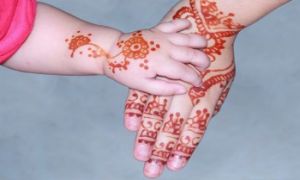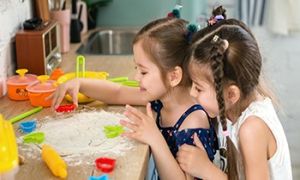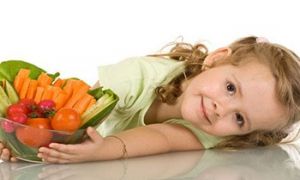

In the ongoing discourse around quality early childhood education, educator-to-child ratios often dominate the conversation. While ratios are undeniably important for supervision and safety, a critical yet under-addressed factor is the physical space allocated to each child. The reality is stark: even with ideal ratios, overcrowded rooms can undermine well-being, learning outcomes, and emotional safety.
In light of the recent Four Corners investigation and the distressing realities it has brought to the surface, the following is a sample letter to share with families. This letter is designed to offer calm, transparent reassurance while reaffirming your service's commitment to safeguarding every child in your care. This letter may be used, edited, and adapted for your particular service to reassure families that their concerns are valid and their children are safe.
The concept of supervision zones is a practical strategy to enhance child safety and educator accountability where educators are assigned to actively supervise and engage with children.
Here are 5 gentle, emotionally intelligent, story-based resources designed to help young children understand body boundaries, safe adults, and protective behaviors.
Talking to young children about child protection is one of the most powerful ways to build their sense of safety, agency, and trust. It’s not about instilling fear—it’s about giving them language, confidence, and clarity to navigate their world. Here’s how to approach it with warmth, honesty, and age-appropriate care.
Bravehearts Day, held annually on 12 September, is a national child protection awareness initiative focused on preventing child sexual assault and promoting safe relationships. For early childhood educators, this day offers a chance to gently introduce foundational safety concepts through emotionally intelligent, developmentally appropriate practice.
Today, 1 September 2025, marks a pivotal shift in Australia’s early childhood education landscape, with strengthened child safety regulations now officially in force under the National Quality Framework (NQF). These reforms—fast-tracked following the national review of child safety arrangements—aim to close regulatory gaps, improve incident response, and safeguard children in increasingly digital environments.
The NSW Office of the Children's Guardian has developed a SAFE Series Protective Behaviors Program, which helps early childhood educators teach protective behaviours to children in their care. After the session, your service will receive 2 sets of SAFE Series books featuring our loveable SAFE Series stars Sam, Andy, Fiona, and Eve to help adults start conversations with young children about personal safety.
More than two decades after the abduction and murder of 13-year-old Daniel Morcombe, Queensland has introduced landmark legislation aimed at strengthening child protection. Known as Daniel’s Law, the new bill establishes a public child sex offender registry, allowing families and communities to access critical safety information.
A sweeping $189 million childcare reform package announced by federal, state, and territory education ministers has sparked debate over its heavy reliance on technology to prevent abuse in early childhood settings.
 Here is the list of the EYLF Learning Outcomes that you can use as a guide or reference for your documentation and planning. The EYLF… Read More
Here is the list of the EYLF Learning Outcomes that you can use as a guide or reference for your documentation and planning. The EYLF… Read More
 The EYLF is a guide which consists of Principles, Practices and 5 main Learning Outcomes along with each of their sub outcomes, based on identity,… Read More
The EYLF is a guide which consists of Principles, Practices and 5 main Learning Outcomes along with each of their sub outcomes, based on identity,… Read More
 This is a guide on How to Write a Learning Story. It provides information on What Is A Learning Story, Writing A Learning Story, Sample… Read More
This is a guide on How to Write a Learning Story. It provides information on What Is A Learning Story, Writing A Learning Story, Sample… Read More
 One of the most important types of documentation methods that educators needs to be familiar with are “observations”. Observations are crucial for all early childhood… Read More
One of the most important types of documentation methods that educators needs to be familiar with are “observations”. Observations are crucial for all early childhood… Read More
 To support children achieve learning outcomes from the EYLF Framework, the following list gives educators examples of how to promote children's learning in each individual… Read More
To support children achieve learning outcomes from the EYLF Framework, the following list gives educators examples of how to promote children's learning in each individual… Read More
 Reflective practice is learning from everyday situations and issues and concerns that arise which form part of our daily routine while working in an early… Read More
Reflective practice is learning from everyday situations and issues and concerns that arise which form part of our daily routine while working in an early… Read More
 Within Australia, Programming and Planning is reflected and supported by the Early Years Learning Framework. Educators within early childhood settings, use the EYLF to guide… Read More
Within Australia, Programming and Planning is reflected and supported by the Early Years Learning Framework. Educators within early childhood settings, use the EYLF to guide… Read More
 When observing children, it's important that we use a range of different observation methods from running records, learning stories to photographs and work samples. Using… Read More
When observing children, it's important that we use a range of different observation methods from running records, learning stories to photographs and work samples. Using… Read More
 This is a guide for educators on what to observe under each sub learning outcome from the EYLF Framework, when a child is engaged in… Read More
This is a guide for educators on what to observe under each sub learning outcome from the EYLF Framework, when a child is engaged in… Read More
 The Early Years Learning Framework describes the curriculum as “all the interactions, experiences, activities, routines and events, planned and unplanned, that occur in an environment… Read More
The Early Years Learning Framework describes the curriculum as “all the interactions, experiences, activities, routines and events, planned and unplanned, that occur in an environment… Read More

The following lists the sub outcomes, examples of evidence when children can achieve each sub...
See more...
“I was watching the rain because it made me feel calm. I didn’t want to...
See more...
The following is a cheat sheet for Quality Area 2. Quality Area 2 of the...
See more...© 2009-2025 Aussie Childcare Network Pty Ltd. All Rights Reserved.
